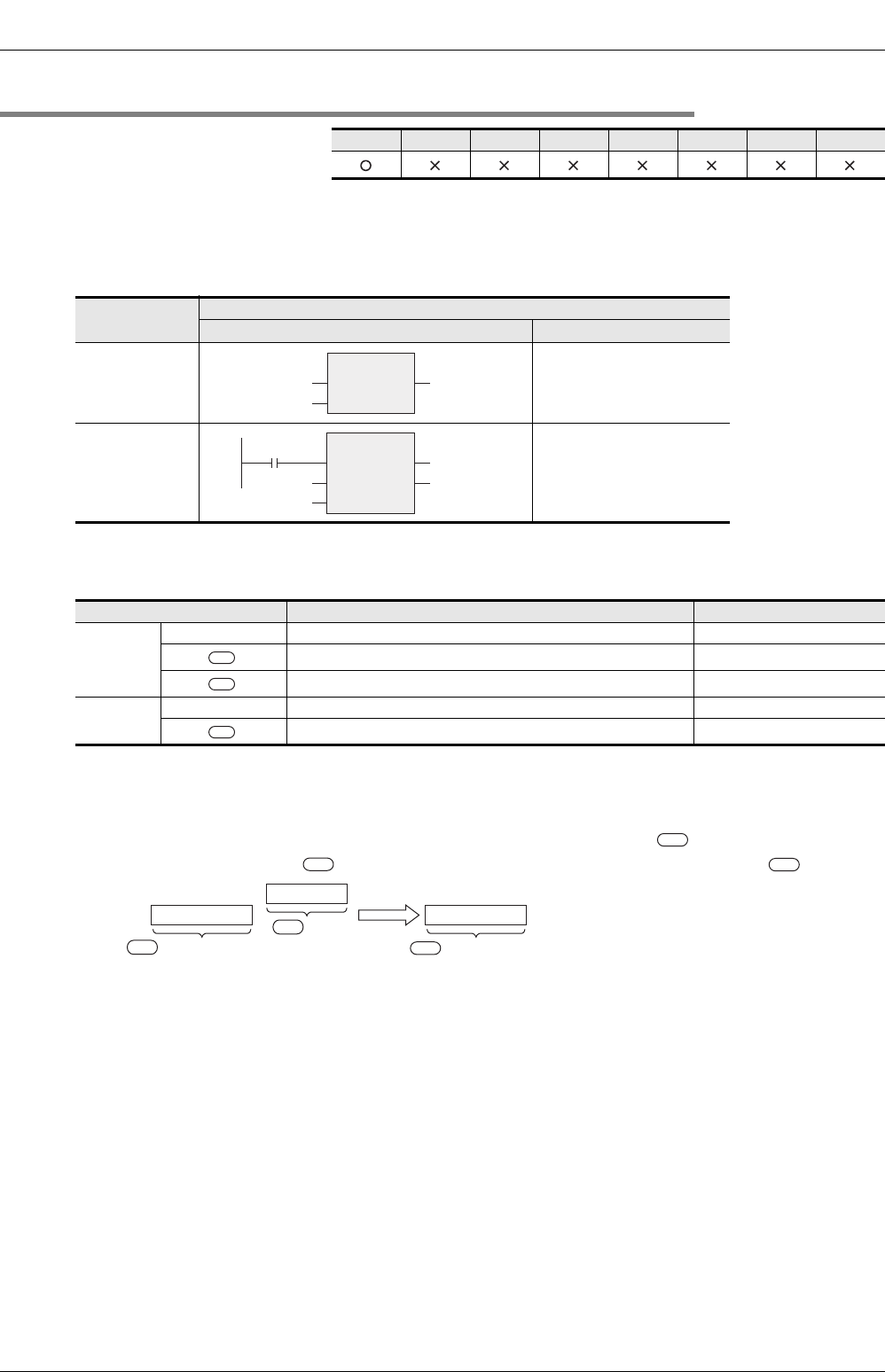
5.3 Standard Arithmetic Functions
146
FXCPU Structured Programming Manual
(Application Functions)
5.3.6 EXPT(_E)
Outline
This function obtains raised result, and outputs it.
1. Format
*1. Output variable
2. Set data
In explanation of functions, I/O variables inside ( ) are described.
Explanation of function and operation
This function raises float (single precision) data stored in a device specified in (to the power of the value
stored in a device specified in ), and outputs the operation result to a device specified in .
Cautions
1) Use the function having "_E" in its name to connect a bus.
2) When handling 32-bit data in structured programs, you cannot specify 16-bit devices directly, different
from simple projects. Use labels when handling 32-bit data.
You can specify 32-bit counters directly, however, because they are 32-bit devices.
Use global labels when specifying labels.
FX3U(C) FX3G FX2N(C) FX1N(C) FX1S
FX
U
/FX
2C
FX0N FX0(S)
Function name
Expression in each language
Structured ladder ST
EXPT
EXPT(In1,In2);
Example:
Label 2:=
EXPT(Label 1,D10);
EXPT_E
EXPT_E(EN,In1,In2,Output
label);
Example:
EXPT_E(X000,Label 1,D10,
Label 2);
Variable Description Data type
Input
variable
EN Execution condition Bit
In1 ( )
Data to be raised, or word device which stores such data FLOAT (Single Precision)
In2 ( )
Power data, or word device which stores such data ANY_NUM
Output
variable
ENO Execution status Bit
*1 ( )
Word device which will store the operation result FLOAT (Single Precision)
EXPT
*1
Label 2Label 1 In1
D10
In2
EXPT_E
EN ENO
*1
Label 2
X000
Label 1
In1
D10
In2
s1
s2
d
s1
s2
d
4.0
2
Word
[signed] data
16.0
s2
Float (single
precision) data
s1
Float (single
precision) data
d


















